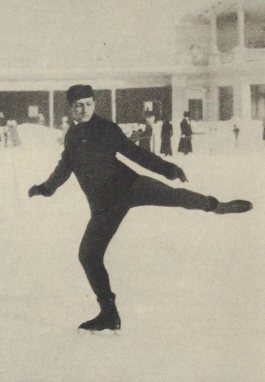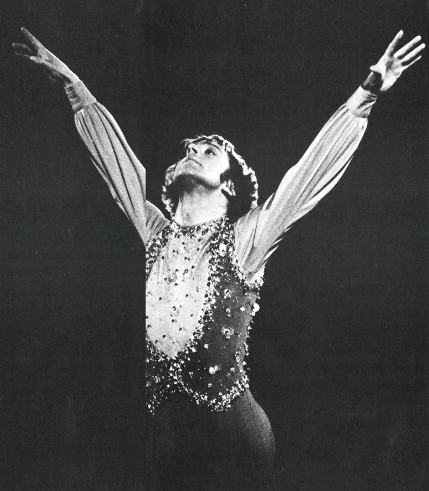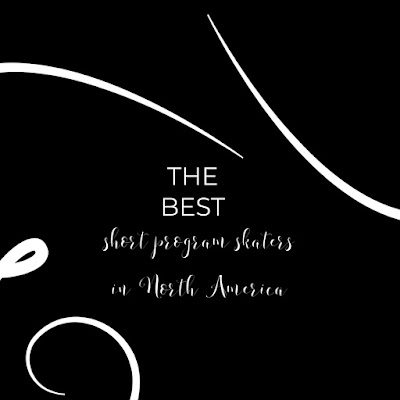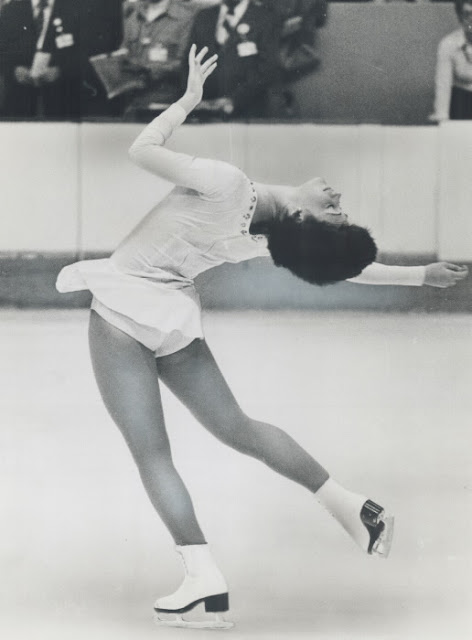"SKATING, HISTORICAL AND PRACTICAL" (HOARY FROST)
There is a trite old proverb that "it is an ill wind that blows nobody any good:" and in its pure and simple explanation, that adage has been fully verified in the recent severities of the present season. A north-east wind brought upon us with unexpected surprise, during the month of December, hard frosts, snow and bitter cold; the consequence was, that thousands of the poorer classes had to undergo much suffering, want, and deprivation.
Many hands were thrown out of work, more especially the masons and bricklayers; though for some of these there cannot be felt even the solace of public sympathy, on account of their ill-judged obstinacy, in regard to the 'nine hours' strike'; they will be looked upon, in a measure, as the authors of their own sufferings; when they might have had work, and might have provided for contingencies such as these, they refused to do it: now they are willing, stern old Frost interposes, as if to punish them for their contumacy. Other classes have more or less claim to sympathy at this season.
But to look at the other side of the question, and scan the immense advantage to the country and the people, which a few weeks' hard frost produces, the welcome it receives from the heavy-land farmer, the beneficial effect it works upon the land, and other minor advantages are extraordinary. To attempt enumerating the good that arises to the community at large, and to trades of various denominations, would be to discourse upon subjects foreign to our purpose. Let us, therefore, turn at once to the subject of the recreations of the people.
At this season of the year there is no out-of-door amusement so popular as skating, more especially in the metropolis; where from the skill of some of the performers, the art has attained a perfection which, it would seem, cannot be excelled. There is no place where it is so eagerly pursued, and so recklessly persevered in, spite of warnings and fatal catastrophes, as in London: in no other place are we so well provided with precautionary means for saving lives, and yet in no other city are there half so many fatal accidents.
It would appear that the art of skating was quite unknown to the ancients, as no notice of it can be discovered in the writings of the classical authors.
The earliest trace that can be found as to the discovery of the art, is somewhere about the year 1170; when it appears from the works of Fitzstephen, a monk who wrote temp Henry II., that the discovery of skating was then first made, through some young men going to sport upon the ice, and binding to the soles of their shoes, shin-bones of the legs of beasts; which which they found they could dart about the ice with the speed of a bird.
In the fifteenth century it appears to have arrived at some sort of perfection: for it is alluded to by Tasso in the "Gierusalemme Liberta", Canto XIV.
In Holland, and in some parts of America, skating is still used in another manner to that of a recreation. When the rivers, canals and lakes are frozen over, skating is resorted to, as the most agreeable and expeditious mode of travelling from place to place: and where the ice admits of it, very long journeys are sometimes performed on skates, and frequently by the poorer classes with merchandise upon their heads, such as baskets of eggs, poultry &c., these journeys are performed in Holland by the female portion of the community with equal skill to that of the males.
Cyclos, in his book on the "Art Of Skating," says "A Dutch woman, skating to market, will carry her baby and a basket of eggs forty miles of a morning; and in winter the Amsterdam market for country produce is mostly supplied by skaters."
All the Dutch country-women skate, the poorer classes as a useful, if not necessary, mode of communication with the nearest market-towns; and the superior classes as an agreeable exercise. It is only those who have been in Holland in winter, and seen the Dutch girls skate, that can imagine what a fascinating figure they cut. A pretty Dutch girl dressed in her usual neat and exquisitely clean attire, gliding gracefully upon her skates, now whirling to the right, now to the left, then backwards, forwards and round again; then darting along and bending her symmetrical form in such leaning positions as if she would kiss the frozen element, but in an instant recovering her position, or leaning to the other side; her graceful movements and pretty attitudes becoming more and more attractive as the rude wind from time to time ruffles her lily-white garments and displays "the prettiest ankles in the world."
In scenes such as these, among the "fairest of the fair", who can wonder at an English traveller speaking of them as "irresistable to human nature?"
Captain Clias, in his little work "On Gymnastics" states that, "In Friesland, thirty persons may sometimes be seen together on the ice: that is, fifteen young men with their mistresses, who, all holding each other by the hand, appear as they move along, like a vessel driven before the wind. Others are seated on a sledge fixed on two bars of wood faced with iron, and pushed on by one of the skaters. There are also boats ten or fifteen feet long, placed on large skates, and fitted up with masts and sails. The verility with which these boats are driven forward exceeds imagination: and it may be said they equal the rapid flight of a bird. They go three miles in less than a quarter of an hour."
And it appears that in Sweden and Norway, and on the shores of the Baltic, it is no uncommon practice with hunters of wild animals to conduct the chase on skates, when the haunts of the objects of their pursuit are in covers, skirting the margin of some frozen lake. In these adventures the hunters are sometimes threatened with savage attacks by wolves and other ferocious animals; when, such is the skill and dexterity of the skating hunter of those parts, that by actively turning himself about on the skates, when closely pursued, and then darting off at great speed, he saves his life. But it is seldom that the Norwegian hunter runs away from his prey, he rather prefers close quarters, and a brief but sharp attack: during which, a few dextrous stabs, or a well-directed shot from his carbine, generally finishes his victim.
In Canada the skating is remarkably good; there, too, various pursuits on the ice engage the attention of the people. The winters there are generally very severe, the ground being usually covered with snow from December to May. Business is frequently suspended, and the most animating scenes take place; outdoor games of all sorts are performed on the ice, and in these the people of all ranks indulge, with a spirit and energy such as adds greatly to the popularity of the neighbourhood and the encouragement in healthful recreation. Sledging, cricket, golf, bandy or hocky, trap-ball, dancing and other active amusements are kept up from day to day throughout the winter with unbating zeal.... "They sweep, on sounding skates, a thousand different ways, In circling poize swift as the winds."
And, during the season, the merriest of festivities are going forward of an evening; dances are of nightly occurrence; and parties are given, interchangeably, from house to house throughout the whole winter; so that life in Canada is by no means unenviable when the severities of frost have caused a stagnation to trade and mercantile pursuits.
Cyclos relates an amusing anecdote of an escape of a captive settler from the hands of the West Indian marauders through the aid of a pair of skates, which, under the ruse of showing his captors how to use, they permitted him to put them on, when he dashed away with lightning speed...
Before the English fens were drained and cultivated, travelling upon skates was much resorted to in this country; but within the last twenty years this graceful and independent mode of transit from place to place has been very rarely used - the drainage of low levels, and the absence of a severe frost following immediately upon a flood, having precluded the possibility for such a practice; added to which there are now so great facilities for travelling across those levels by railroad, that the old-fashioned custom is unnecessary. But previously to the railways, when roads became bad from frost or snow, a regular communication or ice-transport, was kept up between Whittlesea, Wisbeach, Chatteris, Ramsey, St. Ives, and March, to Peterborough; various productions used to be conveyed from villages and farmhouses to the towns and populous distrcts many miles distant, by means of sledges, and in some instances small boats placed on sledges; so that in the event of the ice breaking or a thaw suddenly setting in, the merchandise was safe from injury from wet; and sometimes on the return journey the boat was brought back by water with the sledge uppermost. At many of the places alluded to, in the fens, there used to races and sports, which were of a character to attract considerable attention, and immense numbers of peoples. At these performances prizes were given in the shape of money, coals, legs of mutton, great-coats, hats, shoes, skates, tea-kettles, &c., the intention being to provide a slight help to those classes who were thrown out of work through the severity of the frost.
In the year 1820 challenges were publicly advertised by some celebrated 'runners', to race with skates upon the ice with any man in England for 50 or 100 guineas. The most distinguished runners were Staplee, Egar, Perkins, Youngs, Gittam, and others.
Among the records of performances by those celebrated fen-skaters, we find that Perkins could always beat John Staplee for one mile, though the latter could run a mile in one minute and four seconds; and over a two-mile course he could always beat Perkins. Charles Staplee ran a match upon skates with Youngs for 5 guineas over a two-mile course, which was performed by the winner in five minutes and eight seconds.
It is also recorded that in 1838, two of these runners went from Ely to Cambridge and back, on their skates, in 2 hours and 36 minutes, the distance to and fro being 40 miles, and this on ice anything but smooth.
To perform feats such as these, a systematic and somewhat severe training is necessary, or to attempt such long rapid journeys might be attended with dangerous consequences. And it must not be lost sight of, that these men were trained to running rather than to any graceful performances on the ice. In fleetness, and in that only did they excel.
In the event of the present winter proving severe, a revival of some of these good old ice-sports and festivities would be very popular.
In London, during a severe winter, the greatest attraction to peer and scavenger, from Whitechapel to Belgravia, is skating on the Serpentine. Everybody goes to the parks, either to skate or slide, or to look on at those who do so. Old and young, papas and mammas, nursemaids and children, all linger on the banks of that far-famed field of science - the London skaters' practice board; and in severe weather, when the ice is pronounced "perfectly safe," the crowds that assemble in that locality are astonishing. No other amusement commands half so great an attraction, or is half so eagerly and energetically indulged in. The Londoners, proud of their fame as the most accomplished skaters in the land, are eager to maintain that character, and encourage so healthful and agreeable a recreation.
Among the thousands who gaze upon the gliding multitude, how few are aware that among that busy throng, all mixed together in a heterogeneous mass, might be selected characters of every denomination, from the most distinguished statesmen in the land to the most notorious pilferer of the metropolis; but so it is, and whilst mirth and good-nature prevail around, no one cares to think or know whether the Earl of Pomposity or Duke of Hauteur are performing a reel in the same circle side-by-side with an Old Bailey smasher, so long as there is scope for pleasure and merriment in the animated displays upon the ice. Peals of laughter ring among the throng, and are echoed from bank to bank, as ever and anon some awkward performer measures his length upon the ice, in his vain attempts to imitate the more accomplished skater. Let us pass on among the crowd, and our ears are everywhere greeted with "all hot! 'taters!" "mutton pies, all hot!" and "Here ye are, ladies and gentlemen, all hot and strong peppermint and ginger lozenges!" Then there are the skate proprietors, or those who have tables full of skates for sale or hire, and who never fail to ask every passing man or boy - "Try a pair on, sir?" "Some of all sorts, sir;" "Rockers, sir;" "Just your size, sir;" and with such like persuasive arguments, it seems almost unkind to refuse to "try a pair on," and deposit half-a-sovereign with the proprietor as a guarantee for safely returning them.
But let a gentleman only walk along the banks of the river with a pair of skates or a suspicious-looking parcel under his arm, and he will be accosted at every ten or a dozen yards with "Put your skates on for you, sir?" "House to sit down in, sir!" (pointing to a small covered tent). "Good place to go on here, sir!" In short, he will get no peace until he submits to the operation of having his heels pierced with the gimlet of some frozen-out bricklayer, or other industrious mechanic, who probably has nothing else to depend on for the maintenance of himself and family during the inclemency of the season; but the few pence bestowed upon him by the skaters, for whom he provides the convenience of a chair and [gimlet] for the purposes aforesaid.
When fairly equipped upon the ice, should the hapless skater glide into one of the thousand circles, which are swept and cleared for the reception of the evolutionists, he is soon accosted by the sweeper with a humble request that he will "give him a copper". All these, and a thousand other incidents, though simple in themselves, form matter of reflection to the thoughtful-minded in this great metropolis, during the "hard times" of a severe frost.
Having alluded with merited commendation to the ladies of Holland, in their capacity of skaters, it is impossible to pass over without a comment the English ladies who figure upon the ice in London. Happily, they are but very few. An English lady is out of her place when figuring publicly upon the Serpentine; and in these days of interminable crinoline, however exquisite the foot and ankle, or taper the leg encased in scarlet hoze, the ice in the public parks is no place for our wives and daughters. Let the ladies of other countries indulge to their hearts' content in such performances; but let our English ladies content themselves with parading the banks of such scenes, and looking on from thence; or if they wish to indulge in so harmless and healthful a recreation, let them do so in a place where the public eye is forbid to gaze: "Lest some censorious jester should exclaim, Behold a goddess on the crystal plane!"
In reference to the practical part of this elegant accomplishment, the best instruction is that obtained through watching the movements and performances of the most skilful skaters; and it seldom that such opportunities can be met with elsewhere than in the neighbourhood of large towns - a circumstance which probably accounts for the fact of townsmen being invariably so much better skaters than country gentlemen.
Skates are now so beautifully and perfectly made, that there needs not a word upon the subject - modern improvements having satisfied the desire of the most fastidious performer. A pair of skates is within the reach of all; and those who cannot afford new ones, can get them second-hand for a "mere song."
Beginners should bear in mind that is very necessary and important to keep the ankle stiff - that is, to prevent it from inclining inwards, whilst learning to skate; the whole length of the iron should be lifted, as the foot is raised, and so set down again.
To perform the backward motion, the skater should lean well forward; turning the toe of the right foot inwards and at the same time push himself backwards from that footing; then turn the left foot inwards in the same manner; and so on alternately right and left. Cyclos says that by this backward motion "great speed may be acquired, but it is not graceful, though it may facilitate more difficult evolutions."
Another backward movement is called treading the circle. This is performed by placing the feet in line one behind the other, the toe of the right to the heel of the left; then by leaning forward and slightly lifting one foot alternately, and setting it down again in its position behind the other, and so on repeating the motion without changing the relative positions of the feet, the skater will be propelled backwards in a circle inclining that towards which he leans. It must be remembered that the greater pressure must be made on the front foot, which also should rest on the outside edge; and the back foot on the inside. When this movement is made on a small circle, the lifting of the feet should very slight indeed.
Every tyro finds turning on the inside circle a very easy performance. It is the outside circle which puzzles him, because he fears to trust himself without a prop, which, on the inside circle, his inside leg affords him; whereas on the other, there is no prop: and in fact, none is required, the inclination of the body towards the centre, when in motion - or rather, the centrifugal force - saves him from falling; and he will find that the faster he goes, the more he may lean over.
Forward striking is that easy and juvenile performance on the inside edge. As the tyro requires confidence in this, he should dwell longer on his strokes, but never lift his leg too high, or throw it about ungracefully.
The outside Edge forwards. - Of this performance Cyclos says: "It is unquestionably the most graceful and elegant performance on skates. No one can claim any pretensions to be called a good skater, who is deficient in it." There is no doubt but all the most beautiful evolutions are but variations of the outside movement, forwards and backwards.
The Outside Roll is neither more nor less than the outside forwards. It consists of an outside semicircle on each foot alternately. The tyro should no strike out when practicing this graceful movement. He will find that, by merely lifting one foot at a time, and setting it down again, with a slight inclination of the body, it gives sufficient impetus. Let him learn to lift one foot and then the other alternately, cross it steadily over the other in front, and set it down, observing to dwell as long as may be on whichever foot is inside the circle, and as short a time as possible on the other. Do not bring the aft foot forward until the instant it is to be put down. Never carry the disengaged foot poised in the air in front of the other. Practice both circles alternately. The best-sized circle for practicing is from eight to ten feet diameter. The tyro should learn to make a complete outside circle, before commencing the more advanced accomplishment of rolling.
The Outside backwards. - This difficult movement is performed by resting as much as possible on the foot which happens to be nearest to the inside of the circle, that foot working on the outside edge of the iron, and at the same time try to lift the other altogether, which, with practice, may soon be performed; and when the skater is able to perform it easily and gracefully, he will be well-nigh master of the whole art of skating, and be able to twist and turn in every graceful evolution he can think of or invent.




















